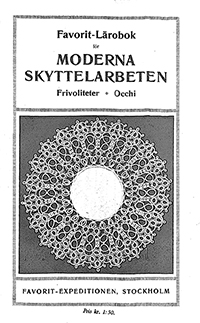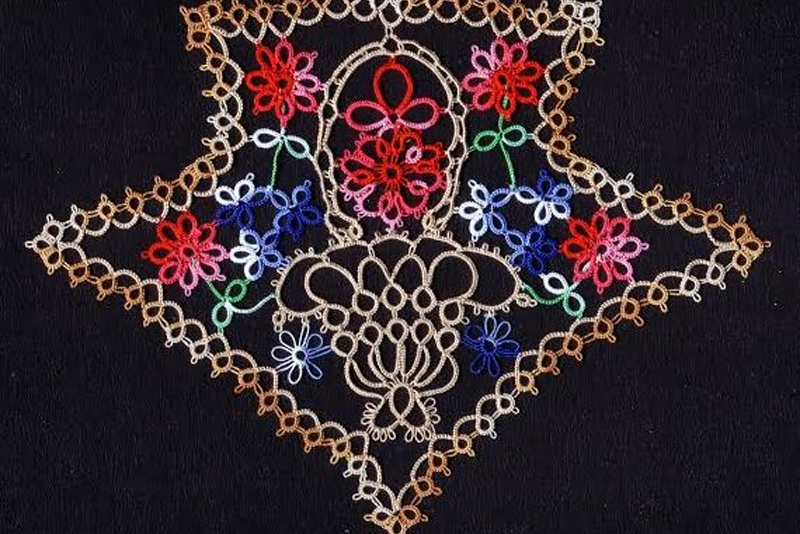This unidentified photograph of Swedish “tatters” was taken by Revell Carr on June 30, 1998. (I saw no sign of tatting in the photo but great folk costumes. - ed.) Scandinavian in origin, tatting evolved from knotting or tying rags together and progressed into decorative accessories for clothing and furnishings. (There is no proof for this statement tat tatting originated in Scandinavia. - ed.)
Swedes were the largest contingent of Scandinavian immigrants in the United States from 1820 to 1920. The earliest Swedish immigrants were middle-class business owners, adventurers, and/or technicians who came as passengers on ships carrying Swedish iron ore to the United States.
However, by the 1850s and thereafter, the majority of Swedish immigrants were farmers. Although many were seeking religious freedom from the authoritarian Church of Sweden (Lutheran), the majority emigrated for economic reasons. Economic pressure arose from a rapidly expanding population coupled with a limited amount of available land. In 1870, 48 percent of Sweden’s farming population was landless. Moreover, “American letters” from friends and family members describing economic success and a better life across the Atlantic Ocean, motivated more than 1.1 million Swedes to migrate to the United States.
Swedes settled largely in the wheat belt of the Midwest. However, by the early decades of the twentieth century, Swedish immigrants and second-generation Swedes had migrated westward along the lines of the Northern Pacific and Great Northern railroads to the Pacific Northwest. In 1930, there were more than 11,000 Swedish immigrants and nearly 15,500 second-generation Swedes living in Oregon. The largest community was in Portland, but significant settlements were found in Astoria, Coos Bay, Bend, Klamath Falls, and Medford.
Swedish farmers in Oregon were well-known for purchasing clear-cut, stump-ridden lands and transforming them into productive farms. The oldest Swedish-American settlement in the Pacific Northwest is Astoria, where Swedes were prominent in both the fishing and logging industries. The 2000 census noted 4.3 million Swedish Americans in the United States and over 107,000 living in Oregon.
Further Reading: Daniels, Roger. Coming to America: A History of Immigration and Ethnicity in American Life. New York, N.Y., 2002. Written by Robert Donnelly, Joshua Binus, © Oregon Historical Society, 2004, 2005. Oregon History Project https://oregonhistoryproject.org/articles/historical-records/swedish-tatting/
"Teachers and educational organizations may use the content on the Oregon History Project for educational purposes only. They do not need to obtain permission to use site materials for classroom exercises or teacher workshops. "
What an interesting tidbit of tatting history... There is an earlier article on Swedish tatting posted here at tatting @BellaOnline.com
http://www.bellaonline.com/articles/art302080.asp
This book is still being sought.

Here's the latest article from the Tatting site at BellaOnline.com.
Tatting to the End Here are some good reminders that when we start to tat we need to start at the end by considering how to finish off the tails of the thread. And what an array of methods we have to help us.
http://www.bellaonline.com/articles/art306233.asp
Please visit tatting.bellaonline.com for even more great content about Tatting. To participate in free, fun online discussions, this site has a community forum all about Tatting located here -
http://forums.bellaonline.com/ubbthreads.php?ubb=postlist&Board=39
I hope to hear from you sometime soon, either in the forum or in response to this email message. I thrive on your feedback! Have fun passing this message along to family and friends, because we all love free knowledge!
Georgia Seitz, Tatting Editor
http://tatting.bellaonline.com
One of the hundreds of sites at BellaOnline.com







